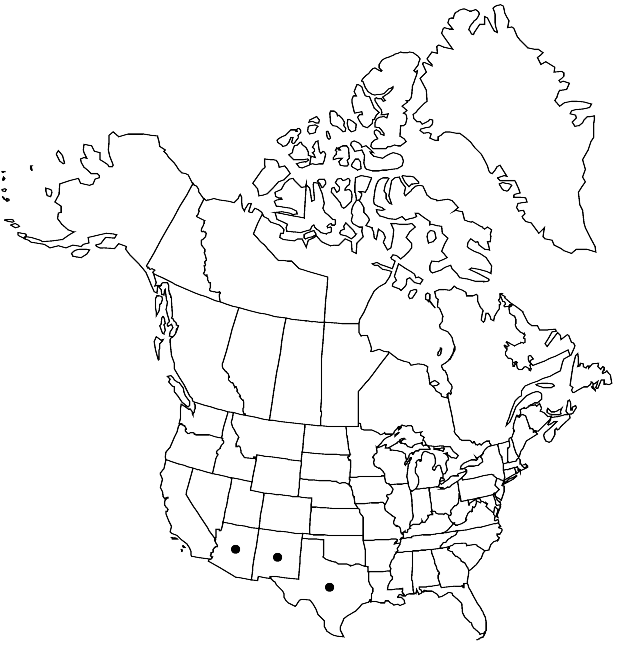Noccaea fendleri subsp. fendleri
Stems (0.6–)0.8–2.2(–2.8) dm. Basal leaves: petiole differentiated from blade, (0.6–)0.9–2.2(–3.3) times longer than blade; blade ovate to oblong, (3.5–)6–16(–20) mm wide, base cuneate. Cauline leaves (4–)7–16(–21). Racemes often compact. Fruiting pedicels horizontal or slightly descending, forming an angle 80º or more with rachis. Flowers: petals pinkish purple or, occasionally, white, (6–)6.5–11(–13) × (1.5–)2–4(–5) mm. Fruits often winged, obovate to obcordate, 7–12(–16) × (4–)4.5–6(–9) mm, 1–2 times as long as wide, apex truncate to emarginate; style (1.8–)2.5–3.5(–4.2) mm. Seeds 4–6 per fruit. 2n = 14.
Phenology: Flowering Mar–Jun.
Habitat: Shady areas on slopes, in canyons and gulches, igneous rocky ravines, steep banks, woods
Elevation: 1300-2100 m
Distribution

Ariz., N.Mex., Tex.
Discussion
R. C. Rollins (1966, 1993) recorded a tetraploid count of 2n = 28 from Hinsdale County, Colorado, but subsp. fendleri does not occur in that state, and his count is based on plants of subsp. glauca.
Selected References
None.